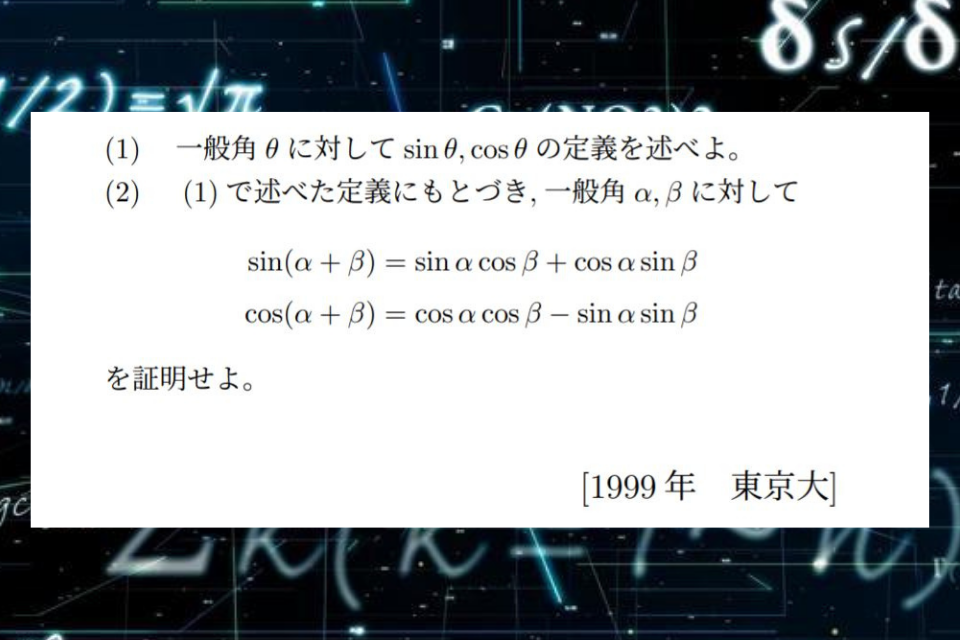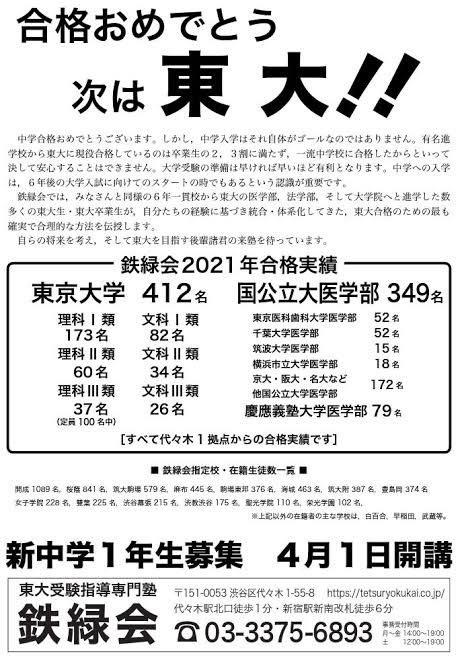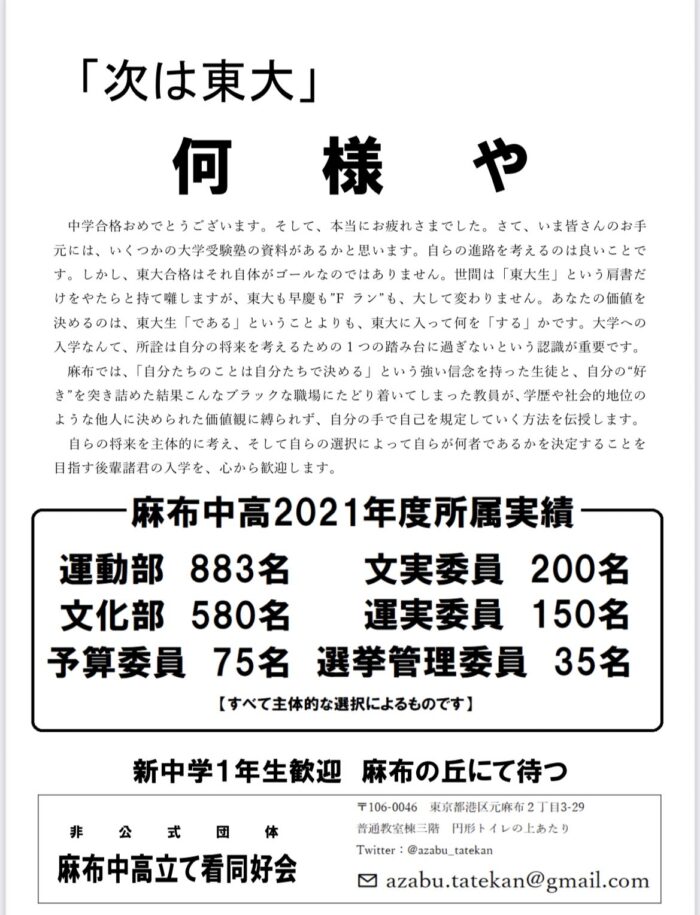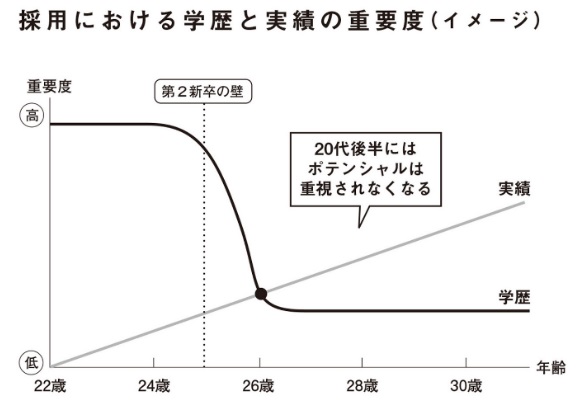物理で使うための数学をどう教えるか、数学的な厳密さをどこまで大事にするかは、教える側としては悩ましいのだろうと思います。
物理数学は自分にはよくわからないのですが、生物学に関する内容で、わかりやすさを優先するあまり、科学的に正しいとはいえないところまで単純化した記述をしている生物系の教科書を見たことがあります。また、別の生物系の教科書を精読していて、どうしても疑問が解消しなくて著者にメールして直接訊いてみたところ、「長年教えた経験から言えることだが、正確さを犠牲にしてでもわかりやすさを優先しなければ、かえって学生を混乱させることになる」というコメントをもらったことがあります。
全微分がトレンド入り
学術用語がSNSのトレンド入りをするのは、珍しいのではないでしょうか。
TL、みんな全微分の話してる
トレンディー— matryosika@亜鉛(Zn) (@matryo_sika) November 3, 2024
全微分の話題がすごい
全微分ってなんすか— Yashiro (@yashiro_ld) November 2, 2024
全微分なにがあった
— きえだ ゆうすけ@『数式組版』ラムダノート (@p_typo) November 2, 2024
全微分炎上
あれ???ヨビノリなんか燃えてるの??? https://t.co/P4whh7wtSE
— らくがきノート (@keyroserose) November 2, 2024
私のTLで全微分が炎上している
— ロンバ (@ISDA2060) November 2, 2024
ちなみになんでこんなめちゃくちゃ叩いてるかというと、全微分の定義が分からなかった時代にこれをみて、さらにわからなくなったからです。ちゃんとした数学の動画って用語が分かれば定義はわかるように説明されてるけど、あれは「物理学的常識」がないとわけわかんないからね。あれは物理の動画だよ。
— 反例構成モンスター (@hide_theta) November 1, 2024
ダメなのは、数学のフリをしているところ。そして、「表記法」ではなく、「全微分”とはなにか”」としているところ。
— 反例構成モンスター (@hide_theta) November 1, 2024
この手の説明が世の中にそこそこ出回っていたせいで、全微分の定義が長いこと分からなかった苦い経験がある
正しい全微分の定義を説明されたこともあるけど、それとdfなんちゃらみたいな説明が繋がらなくて余計に混乱してしまった— 男は黙って… (@nanasi98) November 2, 2024
あと、厳密にしろ、と言ってないんよな。
タイトル詐欺をするなと言っている。
これは数学の動画じゃなくて物理の動画でしょう?
「全微分とはなにか」ではなく「一次近似の仕方」あるいは「2変数関数の一次までのテイラー展開」でしょ? https://t.co/2pQL51PqJj— 反例構成モンスター (@hide_theta) November 2, 2024
全微分がどうたらの件。
たくみさんの動画見てないけど、少なくとも板書の画像だけ見た印象では、「『数学系の人が』この説明が厳密ではないと憤っている」
と誤解されるのは遺憾です。
— int (@ssint1120) November 2, 2024
TLお騒がせしてすいません。
これは単なる私怨です。全微分の定義が知りたかった時期にこの動画でかなり混乱したことに対するちょっとした文句です。
この動画のカテゴライズをもっと物理であることを全面に押し出して欲しかったと思っているだけです。— 反例構成モンスター (@hide_theta) November 2, 2024
炎上発生の周期性について
学部二年辺りの時期の数学科がヨビノリに噛みつき始める風景、どのシーズンの季語にするべきなんだろうか
— ナガタ (@tzn1884) November 2, 2024
定期的に流れて来るヨビノリさんへの批判を見て、数学の人って怖いなといつも思ってます
— arune (@arunecos) November 2, 2024
ヨビノリ氏の動画に対しての厳密性に関する批判、定期的に起きるが一視聴者としてはどうでもいいかな。とりあえず批判者にはチャンネル名をもう一度読み直したらとしか言えない。もし「数学科ゼミのノリで学ぶ」だったら批判が妥当かもしれんけど。
— 富士州@試され (@fujisyu) November 2, 2024
炎上の効果
ヨビノリの全微分に対する批判を理解するために微分形式を勉強したい欲が高まってきた
— 桑薔薇er桑薔薇er (@m4kurakotoba) November 2, 2024
自分もこれを機に家の本棚に眠っていた高木「解析概論」を見てみました。大学生のときに買って以来、なんとなく敷居の高い本だと思ってほとんど開いたこともなかったのですが、実は初心者向けに易しく書かれた本よりもよっぽど丁寧な説明(デルタxとdxの区別がしっかりと書かれていた)があって、少々驚きました。
全微分とはなにか 予備校のノリで学ぶ「大学の数学・物理」
【大学数学】全微分とは何か【解析学】 予備校のノリで学ぶ「大学の数学・物理」 チャンネル登録者数 117万人
全微分の動画見たけど、
ヨビノリがよく冒頭でやってる数学マニア避けの枕が付いてなかった。
結構古い動画だからまだ枕をつけてない時期だったのかな。。 https://t.co/AbPQayDY1J— 中嶋 謙互 (@ringo) November 2, 2024
全微分動画炎上に対するヨビのりたくみ氏のコメント
最近は数学畑の人や数学的に進んだ内容を勉強をする人が見ることを意識して数学的に厳密でない話をするときには(自分が理解できる範囲で)できるかぎりexcuseをしているんだけど、活動初期は完全に物理畑の感覚が抜けていなくて、そのあたりが十分に配慮できていなかったな。…
— ヨビノリたくみ (@Yobinori) November 3, 2024
全微分は何ではないか
全微分は全日本微分協会の略
— 局所慣性系 (@localinertial) November 3, 2024
自分は数学のことは何もわからないのですが、おそらく、全微分は、全日本微分協会の略ではないと思います。
お気持ちとは
この炎上案件に関するツイートに、「お気持ち」という言葉が見られましたが、どういう意味でしょうか。
真面目な話、数学って定義から始まるってよりかは、こういう性質が成りたて欲しい→こう定義すればよさそう という、性質→定義の流れだから、むしろお気持ち→定義は自然な気がする。コンパクト開位相とか、どういう気持ちかを先に書いてくれないと訳わかんないので
— Allium (@allium_fistul) November 2, 2024
数学において、「厳密でない説明や議論」は初学者だけでなく研究者間でも行われる。厳密な証明は後回しにして感覚的な話から入り、ゴールまでの道筋を示すこともある。教科書に正しいことが書かれていても「お気持ち」が知りたいときもあるし、それで得られることもある。バランスが大事では?
— 渡邉究/9/3~11/14までニースに滞在/数学科准教授/YouTube (@Kiwamu_Watanabe) November 3, 2024
全微分を心に抱えて生きている人の多さについて
なんか時々理系のコンテンツでプチ炎上的なのあるわね。今日は全微分で。
全微分が話題になる理由は、きっとみんな全微分を理解したいと思っているけど理解できないし、理解させてくれる人も本もなくてみんなモヤモヤしてるからじゃないかなぁ。そして僕も理解できずに大学を卒業したのだった。— Hamano Y@ゆっくり実況者 (@Hamakun_U) November 2, 2024
大学1年の物理数学の授業で全微分を習った時、なんだこのクソ気持ち悪い説明は!!!ってイライラして、そのイライラを解消したくて図書館にこもって本を引っ張り出して調べまくったが、結局4年経っても納得することはできなかった。
今は「物理数学の勉強で大切なのは諦めである!」と思っている。— Hamano Y@ゆっくり実況者 (@Hamakun_U) November 2, 2024
真面目な話をすると、みんなこんだけ全微分の話ができるってことは、たくさんの人が全微分が好きってことだし、全微分の一般化のフレシェ微分も好きなはずだと思う。だからその応用先として変分法をみんな履修すれば世界は平和になると思う。
— 解析学布教用アカウント (@ShizueANANAN) November 2, 2024
余談ですが、「10代の頃に渇望していたもの」「10代の頃に手に入らなかったものに人は一生執着する」「ひとは10代の頃に手に入らなかったものに死ぬまで執着する」といった言説を良く目にします。
「10代の頃に手に入らなかったものに人は一生執着する」ってずるい言葉だよな。10代の頃なんて誰も何も持ってないんだから、だいたいなんでも当てはまっちゃう
— 九月 (@kugatsu_main) January 22, 2021
「ひとは10代の頃に手に入らなかったものに死ぬまで執着する」ので、ぼくは大家族だったからプライベートな空間がトイレと風呂しかなかった影響で、今も「ひとりの時間」が好きだし、19歳の最後はオーストリアでゴミ箱あさる難民してたから「ゴミ箱の中のハンバーガーを漁りたい」という気持ちが強い。
— プロ奢ラレヤー (@taichinakaj) May 11, 2020
- ひとは10代で渇望したものを求めて生き続ける ひとは「あの頃のなにか」の再来を、待ち遠しく生きている。@taichinakaj 2021年7月18日 12:08 note.com
自分の場合、それに該当することの一つが、「大学に入学して理解したかったけど全く理解できなかった理数系の科目」なので、全微分が話題になっているのを見ると、心がざわつきます。生物系の大学院に進んだら、使う数学は小学校レベルの四則演算だけになってしまい、その後、研究を続けていても、ほとんど数学が必要ない状態だったので、理解できていなくても何も困らないのですが。ただし、その後、時代が進んで、生命科学のデータでも機械学習を使った分析を使うのがまったく珍しくないようになってきたため、自分の研究者としての能力の限界を感じました。生物系は測定手法や実験手法も昔は想像もつかなかったようなことが実現していき(オミックス解析、シングルセルRNA sequencingなど)、実験手法、分析手法の革新的な進展の波に自分が取り残されたように感じます。数十年後に時代に取り残されないようにしたければ、実は学生時代に基礎的な理数系の知識をしっかりと習得しておく必要があったなと思います。今さらですが。昔、分子生物学の波に乗れた人と乗れなかった人で研究者の明暗が分かれるのをリアルタイムで目撃していましたが、それと同様に現在、人工知能という大きな波を始めとして、遺伝子発現や代謝物その他さまざまな生体物質の網羅的解析、単一細胞レベルでの解析、さまざまな画像測定・分析手法などいくつもの大きな波が研究者に覆いかぶさっており、これらの波に乗る人と乗り損なう人とで、やはり明暗が分かれるんだろうなと思います。もはや、小さなラボで小さな研究予算でこれらの波の上に乗るのはほとんど不可能なのではないでしょうか。話がだいぶそれました。
全微分を教えてもらえなかった心残りについて
工学系のカリキュラムに出てくるよくある奴は全微分可能性の定義で、全微分の定義ではないんですよね。
当時「全微分可能性は分かったけどじゃあ全微分ってのは結局なんなんだよ」って切れた記憶があります笑
— まますさん (@mamas16k) November 2, 2024
最近、自分は独学したい初学者向けにしっかりと系統的に書かれた教科書に出会うととてもうれしくなります。
数学徒および数学徒ではない人たち
全人類が数学科の厳密さで数学してるわけでもないし、する必要も無いわけで。
ヨビノリ見て、
「俺は全微分を完全理解したぜ!
ウヒョー!」
でもそれで本人が困らないならばめでたしめでたしでOKだと思うのよね。
数学なんてぶっちゃけ99.99%の人は研究対象じゃなくて単なる道具なのだから。— ハインツグーデリアン (@Math_Heinz_777) November 2, 2024
ヨビノリにブチ切れる数学の人たちに工学部の数学系講義の期末試験とか見せたら衝撃で爆散するかもしれない (?)
— winter_2521❄⛄️ (@winter_kyopro) November 2, 2024
自分は高校1年の数学の最初の授業で躓いて以来、全く挽回できないままなので、数学ができる人はもうそれだけで尊敬します。完全にリタイヤして暇になったら、数学をゼロから勉強してみようかな。
教える側にとっても学ぶものにとってもやっかいな物理数学というものについて
全微分、確かに、よく分からなかったなぁと思ったことを思い出した。
よく覚えてないけど、学部のときは「物理は数学を道具として使うので、数学的な厳密さは求めません。一部、まだ証明されていない式も使います」というような説明をTAの方か先生かに聞いた気がする。
— なにしましょ (@junchiibukubuku) November 2, 2024
ここでの話題からズレるかもしれませんが、高校の数学の時間ではdy/dxは一つの記号だからdyとdxは分けられないと習ったのに、予備校の物理の時間には、dyとdxが式の両辺に出てきて両辺を積分したり当たりまえのようにしていたことに、戸惑った記憶があります。わけもわからず見よう見真似でそんなことをやって物理の勉強をしのぎましたが。
正確性とわかりやすさの両立の難しさ
ヨビノリの全微分公式の説明に対する批判ツイートみたけど、私も大昔にほぼ同じ指摘を受けて、いろいろ考えた末に動画のように説明することで落ち着いている。批判の仕方はアレだけど、わかる部分はある。正確性とわかりやすさの両立は難しくて、日々修練しかない。https://t.co/92slMVdEWX
— 加藤岳生 (@takeokato719) November 2, 2024
ヨビノリさんが「不正確な」説明で叩かれている件ですが僕も「中学数学でわかる」って銘打って、機械学習の入門書を書いても「不正確だ」とバッシングされたのでバッシングされるのがいやだったら最初からそういうことに手を出さない以外は無理です。
— 田口善弘@発言は私の個人としての見解であり中央大学やその機関の意見を代表するものではありません (@Yh_Taguchi) November 2, 2024
教える対象の多様さゆえの困難について
ヨビノリさん、全微分で炎上か。釈迦の「人を見て法を説く」ように、ある人にとって最適の説明が、他の人には最適でないことがある、というだけの話では。批判者は、禅や念仏に怒る日蓮みたいな感じ。だけどそもそも、それらももともとの釈迦の教えではないらしいし。
— Ryo (@awtjvyjz) November 2, 2024
非常勤講師をしたときの自分の経験から言うと、大学で生物を教える場合、高校で「生物基礎」しか履修していない学生と、「生物」を履修してきた学生が混在しているので、どこにレベルを合わせて授業を行えばいいの?という問題が生じます。高校の生物をしっかりと勉強してきた学生を面白がせる授業をしようとすれば、他の多くの学生はついてこれないでしょう。昔、職探し中に面接で某大学で模擬授業をやらされたときも、その点に関してどういう考えを持っているか?という質問が飛んできました。
YOUTUBEの視聴者の専門性もピンキリなので、すべての層を満足させる説明というのはあり得ないのかなと思います。
最初から厳密な説明をされたほうがむしろわかりやすいことがあることについて
たいていの場合において厳密なほうが易しく感じる自分にとっては、全微分の件における(ある種の)意見を聞くたびに孤独を覚える
— ぼんてんぴょん(Bontenpøn) (@y_bonten) November 3, 2024
理解に至るまでの道のりが人それぞれであることについて
全微分の話題に限らず、学習者によって登りやすい経路は多様であるため、さまざまな方向性が存在することを好ましく感じている。私個人の経験ではもやもやとして納得感に乏しかった初学者向けの文献もあるが、それが著しく効いた人も恐らくいるのだろう
— ACTIVE GALACTIC (@active_galactic) November 3, 2024
大学の理数系の科目で学ぶ内容は、理解するのに骨が折れるものばかりなので、入門するための本、俯瞰するための本、細かい議論を詰めるための本など、結果的に何種類も読むことになると思います。自分の身の丈に合った教科書に取り組んで、挫折せずに勉強を続けていけることが一番大事なのではないでしょうか。
ヨビノリさんの動画を見る際の正しい心構えについて
ヨビノリでも何でもそうだけど、常に批判的な精神で見た方がいい。特にYoutubeなんて今や誰でも動画を投稿出来るのだから、尚更内容を疑ってかかるべきだと思う。
というかそもそもな話、誰かに寄りかかって勉強するなんてことはすぐ辞めるべき。楽して何かを学ぼうという魂胆が透けて見える。— サナtorium虚心坦懐 (@math095562) November 2, 2024
上のツイートの内容は、物理や数学の教科書でまえがきなどによく書かれていることです。自分で納得できるまでは本に書かれていることを信じるなというわけです。教科書は誤植もあれば著者の考え違いによる間違いも含まれていることが珍しくないのだそうです。自分は生物系の講義を非常勤講師として教えることになって、教科書を精読してみたら、誤植やイラストの間違いなどに気づくことが結構ありました。1行1行、それはmake senseなのか?と自問自答しながら読み進める必要がありますね。
ヨビノリさんの動画の活用法
ヨビノリさんは私も見たことがありますが、ああいう講座はあくまで「そのテーマについて完全に無知になるのを防ぐ」ために見るものだと思います。もちろん入門のためであっても正確性を犠牲にするのがはっきり有害なら斬らねばなりませんが、一般論としてはそう目くじらを立てるものではないでしょう。
— 大山祐亮 (@Yusuke_OYAMA_) November 2, 2024
他引用にもあるけどヨビノリは入門の入門レベルの話であってそれ以上はちゃんと教科書読もうねという
— かび☆ゴン /n週間m英語論文 (@TRintaro_) November 2, 2024
ヨビノリはどこかで卒業すべきツールなんだから
厳密性に発狂するなよいちいちとは思う
— 冷奴先輩 (@gotohokkaidouni) November 2, 2024
どちらにしてもヨビノリ動画だけ見て事足れりとする風潮がよろしくないので
• 応用数学を学ぶ人は、ヨビノリ動画を見て終わりにせず、そこを手がかりに本を読め
• 純粋数学を学ぶ人はまず最初に本を読むべきで、ヨビノリ動画は補助程度に
という感じの”正しい付き合い方”が必要かなぁと思いました。— 常微分方程式入門 (@ode4phys) November 2, 2024
もし件の動画に対する批判の趣旨が
「①の流儀を学ぶ人にとって、定義が曖昧な動画を入り口にするのは有害であり得る」
ということなら、それはそうだろうと思います。あくまでヨビノリ動画は②の入り口であって、①は定義から入るべきなのでしょうね(ヨビノリを副菜で利用することはあるにしても)。 https://t.co/35tu50JBqj— 常微分方程式入門 (@ode4phys) November 2, 2024
学部時代に、ヨビノリにはかなりお世話になった。理解が停滞して困っているところに『僕の学びをお食べ』と自分の過去の学びと経験を与えてくださった。 https://t.co/Qsq1QxBeX4
— しらたま君 (@ABCsrtmXYZ) November 2, 2024
ヨビノリの顔と声と授業が好きで文系から理系に…
— 色は匂へど散りぬるを (@ir8nhh10) November 2, 2024
ヨビノリは数学苦手な物理学徒が見るのだ。
— ぶにゅぺしゃるうぃーく (@bunyuchan) November 2, 2024
そもそもヨビノリは自分で「自分の動画は入り口です、ちゃんと勉強するためには本を読んでください」って言ってるわけで……(なんか見た)
— (0 0 1 0) (@tiikiyoumoji) November 2, 2024
ヨビノリで一番面白いのは学術対談だってはっきりわかんだね
— あ1(偽ハリー) (@VRIyfmn2dCDxKuV) November 2, 2024
全微分の解説の仕方で盛り上がってるけど、自分的にはレベルに合わせて自分で学んでいくための足掛かりだと思ってるから厳密性はある程度犠牲になってもおかしくないと思うんだよな…
納得いかなかったら自分でやるべきだし、それを他人の責任として押し付けるのは健全じゃない気がする。
— ゆ⊃け (@Uk_ushi) November 2, 2024
ヨビノリ動画の全微分が話題になっているみたいだけど、そもそも全部分の厳密な定義が気になる人はヨビノリの動画を見ないだろうし、ヨビノリの動画を見る人って、「大まかな理解」をしたい人なのでは?
— キノコ老師 (@SMBKRHYT_kinoko) November 2, 2024
ヨビノリと数学警察の戦いは続く!
賢い人は教科書読めるけど
アホは教科書読んでも理解出来ないからヨビノリ見たあとプログラム言語とかグラフ書いたりとかお絵かきしたりして手触りや応用方法を確かめてから教科書に帰る。その後教科書に全部書いてあることに気付くどっちも正しい https://t.co/qlThHSXnoC
— ぺろぺろ (@LwuwKDBxP4s9vkD) November 2, 2024
ヨビノリさんの動画について
これは、動画タイトルを「全微分とは何か」とした時点で詰みが確定してたと思う。
“全微分可能性”を定義することは容易だけど、”全微分”を定義するには微分形式を取り扱う必要があるので、必然的に大学1 ~ 2年生向けじゃなくなってしまうんだよね。
自分なら、「全微分は定義しません」と断言する。 https://t.co/wOpQk1yD9h
— まますさん (@mamas16k) November 2, 2024
ヨビノリさんの動画って昔のやつは確かに典型的な「物理屋さんが解説する数学」って感じで、数学徒目線だと厳密性に欠けるなあと思われる説明も多かったけど(話題になってる全微分の動画も5年前だし)、最近の動画はそういうのにうるさい数学徒も満足できるぐらいにはわりと厳密性にも気を配ってる印象
— てねーる (@Tener_president) November 2, 2024
ヨビノリなんだからあっているだろ!
予備校のノリだぜ。
正確さを求めすぎて難しくなりすぎたらそれは予備校のノリじゃないでしょうよ。— おっちょこちょいメガネ (@N12BpAQppC66569) November 2, 2024
ヨビノリの全微分公式の説明への批判、元の投稿が見つからないのでこれから察するに、正確性と分かりやすさの天秤が原因って感じ
ぼくは初学者には分かりやすさは大事だと思っていて誰でも理解できる例として「言語初学者の赤子のための幼児語」があるね
最初ゎ、車のこと、ブーブーて言うんだょ
— ごつり (@SakuraiMatsuri) November 2, 2024
みんながYOUTUBERになることの勧め
全微分はこんな定式化/説明ができるんじゃ的捕捉動画を作成すればヨビノリ氏も視聴者も大喜びなのでやはり全人類が動画作成能力を手にするしかないな(?)
— פיקם (@phykm) November 2, 2024
そうなんだよな「この動画ダメじゃん」と思ったら『ヨビノリ動画を訂正する』って動画を作って出さないとダメなの。「そんなのやってる暇ない」てんなら口出すなって話。(以前青空文庫をめちゃくちゃディスってた人も最後オレには関係ないからって逃げてた、関係ないんなら口出すな) https://t.co/4z0J2ihUvr
— ふゆき (@YoneyamaFuyuki) November 2, 2024
ヨビノリ動画補足チャンネル、はよ。有識者各位、どうぞ補足していただいて。
— (@boxoa) November 2, 2024
どなたか数学科出身者も唸る超厳密な全微分の解説動画をあげていただけませんかね?
— ko_ka (@koka39743691) November 3, 2024
ヨビノリチャンネルで議論することの勧め
みんなヨビノリの動画に出て議論すれば良くね?
— 局所慣性系 (@localinertial) November 2, 2024
- 予備校のノリで学ぶ「大学の数学・物理」 @yobinori • チャンネル登録者数 117万人
全微分の定義の理解が試されるとき・全微分の定義を知らなすぎなことについて
ちなみに全微分と言えば、東大数理の院試で定義を書けという問題が出て、出来が壊滅的で教員陣が激怒した(または心底がっかりした)とかいう話を聞いたことがある。多分1形式の定義を書けならもっと書ける人は増えたのではないかと思う。数学でもそのくらいご利益のない概念という印象がある。
— 相転移P (@phasetr2) November 2, 2024
そういえば、KO経済の経済数学の期末試験でも全微分を説明しろというのを出していたことを思い出した
— Keiichi Kitamura (@mizuki_fujimura) November 2, 2024
上のツイートを見て、東大が入試で定義を問うたことが以前話題になったことを思い出しました。
- 東大入試の数学の良問その2 ~公式は証明してから使おう~ 東大家庭教師友の会
全微分を説明した教科書が見当たらないことについて
田舎、全微分のこと書いてある本がそもそも存在してない
— だいふく (@nucl333) November 3, 2024
自分は、物理数学の教科書としては、説明のわかりやすさという点で群を抜いているので、
メアリー・ボアス『物理科学における数学的方法』(amazon.co.jp) 2022/7/25 プレアデス出版
原書 Mary L. Boas Mathematical Methods in the Physical Sciences 3rd Edition (amazon.co.jp) 2004/2/1 Wiley
を一番気に入っています。全微分がどのように説明されているかと思ってみてみたら、高木『解析概論』と同じ説明が、さらにかみ砕いて書かれていました。
全微分の有効な活用方法の紹介
すると、dfはf(t,x,y)の全微分なので、このdfを五線譜の上に当てはめる。特に、xとyを徐々に変化させれば、滑らかな長短の音と、上下音の動きの曲ができる。#全微分 #現代音楽 https://t.co/3YaqE7DF9a
— ハウゼン (Hausen) (@hausenjapan) November 3, 2024
全微分って機械学習でも無関係ではなくて、「この損失関数はxとyの片方を真のパラメタに固定した場合の損失関数が真値に最適解を持つのでこれを交互最適化します」みたいなロジックになっていてこういう破綻する例が考えられていないことがよくある。 pic.twitter.com/qq8hqY8jRO
— Akira T. (@akira_dev) November 2, 2024
全微分の教え方に関する論点整理
全微分の話、ざっくり分けて
– 否定派
– 厳密じゃないからダメ派
– 肯定派
– 初学者向けの説明なんだから多少厳密じゃないのも仕方ないだろ派
– 数学的に厳密な正当化が可能だから問題ない派
– 接平面の方程式だと思えばいい派
– 微分形式だと思えばいい派って感じか。色々いて面白。
— はっすー☆(サイコパス風味) (@irohasu_math) November 3, 2024
微分形式もトレンド入り
トレンドに微分形式が入ってる!w pic.twitter.com/87DzT1Ou0U
— marchuq (@marchuq) November 3, 2024
微分形式の幾何学読んでたら微分形式がトレンド入りしてて草 何があったし
— Allium (@allium_fistul) November 3, 2024
なぜに微分形式がトレンドに
— まらず㌠/にゃん!! (@marazu0) November 3, 2024
微分形式がトレンド入りするなんてことがあるのか・・・
— k m (@kou1000010000) November 3, 2024
なんでか知らんけどトレンドに微分形式が。多様体の微分形式はその多様体のコホモロジー群を記述できる(de Rhamの定理)けど、修士の頃、多様体上の微分形式の反復積分が、多様体上のループ空間(無限次元多様体)のコホモロジー群を記述できるというChenの理論を基に研究していたことを思い出す夜だな。
— At-Fuji (@act_fuji) November 3, 2024
自分のトレンドだけかもしれんけど微分形式がトレンド入りしててほんと謎
— こっぺΔmk2改 (@coppe0220_02) November 3, 2024
トレンド「微分形式」が見えるの、僕だけなんだろうか?(ちょうど微分形式の動画を見ていたところ)
— Junichi ‘DJ’ Nakano (@jnakano) November 3, 2024
トレンドなんで微分形式上がってんのかと思ったら全微分関係か
— さくれ.exe (@Sakure_corei) November 3, 2024
まさかのトレンドが微分形式で草です。
自分の中だと電気磁気学定理における積分表記とか微分表記の話が頭に浮かぶけど、全微分の話なんですな。— A (@iNeedWeapon_k) November 3, 2024
全微分のプチ盛り上がりの結果、微分形式がトレンドに上がってる
全微分は確かに高校の微分しか知らない状態だとよく分からんよね、ランダウ記号とか慣れていないだろうし
— おかもと (@kktn0215) November 3, 2024
全微分、微分形式以外ではあんまり意味がわかってない
— 笹岡 (@safour_1) November 3, 2024
全微分を”ちゃんと”理解したいなら結局微分形式(with 多様体)を勉強するしかないと思う、というのが個人の意見
— mapsto (@mapsto_math) November 2, 2024
これの良いところは、微分形式とか多様体とかを持ち出さなくても、私や高校生でもわかるレベル「かつ十分に数学的に厳密・正確に」dxとかdyとかf(x+dx,y+dy)とかにもとづく(全)微分を定義している点。 https://t.co/11ArK8139P
— S (ツイートはツリー全体をご確認ください) (@esumii) November 3, 2024
全く同意見です。一応松坂には入門的に微分形式を扱う方法も書いてある(多様体を定義せず)なんですが、どっちみち、1,2年向けかは微妙なので詰んでると思います。
— ヨビノリの双対、ヨヨビノリ (@hide_theta) November 3, 2024
例えば全微分の話だったら、
「この dx が数学的に何者か気になる人は、微分形式というものを学べばよく分かります。例えば松本幸夫『多様体の基礎』などを読んでみて下さい。さて…」
ぐらいで十分で、ほとんどの場合それ以上ごちゃごちゃ話をしない方が良い。
— さのたけと (@taketo1024) November 3, 2024
もう一点付け加えるなら、全微分の「幾何学における位置づけ」を知るためには、多様体や微分形式を勉強した方がいいというのはもちろんそうだが、全微分の「数学的定義」に多様体や微分形式が必要だというわけではない。線形写像および線形写像値の関数にすぎないので。
— 4次元多様体 (@4_manifold) November 2, 2024
さまざまな意見
当該の動画のスクショを見た限りだと、2変数関数の全微分の定義を与えた上で、「無限小の差」の形の式を書いていたので、説明としては問題ないだろうと思いました。
「微分は線形近似である」を学習のどの段階で説明するかは教える人の価値観による部分が大きいと思います。
— さのたけと (@taketo1024) November 2, 2024
動画見てないけどヨビノリは物理の人だよ。むかーしから物理の人の説明を数学の人がそれはちがーうって突っ込むのを数えきれないほど見てきてこれからも見るだろうけど、数学的厳密性はコミュニティによって違っていいんじゃないのかな。 https://t.co/d778oBX1Z6
— 牟田淳 重版出来!デザインのための数学!アートのための数学! (@akkunmoomin) November 2, 2024
ヨビノリ動画へ指摘(?)する本人のこのポストを見るに,「数学系」と「(数学系以外の)理系」に分けるのが適当かな,などと.「数学系」は「理系」と異なり現実の事物を研究の対象としていないし,論理的「厳密さ」と事象の記述の「適切さ」は同一じゃない.
なお,件の動画は,ぼくは「あり」派. pic.twitter.com/UehiBRwPDT— まなぽん (@niboshiramenno1) November 2, 2024
ヨビノリの全微分の定義が話題みたいだけど、初学者相手にフレシェ微分だの1-微分形式だのとややこしい厳密な抽象概念で説明して何になるのさ?オイラーに同じこと言えるの?としか思えないや。そういう種明かしは後ですればいい。歴史的にもそうだったんだから。
— Yb@おっさん (@kunio_Yb) November 3, 2024
ヨビノリが数学の動画を出すたびに厳密性やらなんやらで怒られているっぽい(?)の毎回おもろいなと思って見ている 医学系はQassistだのmedu4だのに厳密性を求める謎の勢力が居なくて本当に良かった
— めばる (@AeXh3x) November 2, 2024
ヨビノリさんの動画は分かりやすいし、検索すると謎の専門家が厳密な定義も補足してくれるし、ネット集合知の完成系なのかもしれん。
— 宇宙川むかち (@uchugawa) November 2, 2024
微分積分の初学者に対して、全微分を
df = f(x + dx, y + dy) – f(x, y)
と説明 ( ≠ 定義 ) することは全く問題ないと考える。微分は線形近似であるとまず感覚的に理解することが大事だから。
— さのたけと (@taketo1024) November 2, 2024
ヨビノリの全微分の説明は別に1年生向けの物理数学の本とか工学部向けの数学の本とかだと普通に書いてあることだから、矛先を向けるべきはヨビノリじゃない……
あれはとりあえず計算できるようになるための説明なので数学科が怒っても駆逐できないと思うけど— Y・Y (@YY71742817) November 2, 2024
件の全微分や積分と微分の順序問題など、数学を専門に学び始めて厳密性に魅入られた学生が『物理数学は厳密じゃない!』とツッコむのは、農家の人間に対して農業学の本を片手に『あなたは農業の歴史や農学を知らないからこれは農業じゃない!』と言うようなものだよ…
— なしみかん (@Misaki_muuuchan) November 3, 2024
理工系には
「二変数関数f(x,y), 無限小 dx,dyに対して
df = f(x + dx, y + dy)
なる新しい無限小を全微分と呼ぶ」
はスッキリしていると感じるが、数学的な定義とするにはいろいろと難があるのだろうしかしギャップを埋めるのに使われている「物理学的常識」に自覚的なるのは”物理屋”には難しい https://t.co/PQ1qTOaiKU
— mmsaito (@mmsaito1987) November 2, 2024
教養科目の物理で全微分出てきてよくわかんないくらいの人がテスト前に観ること意識してるだろうね
— かいだい (@kaidai_valorant) November 1, 2024
実際全微分dfの定義がf(x+dx,y+dy)-f(x,y)と言われてもdxとかdyが数だと思うとfがアファインでもない限り普通に間違ってる式な時点でちゃんと線形の部分だけ取り出してることを強調しない限り全く分かりやすくないとは思う。
— かけ得 (@kakezantokui) November 2, 2024
「厳密性を抜きにして直感的に全微分を説明するならdf=f(x+dx,y+dy)-f(x,y)でもいいだろ」というポストをいくつか見たんだが、実際は線形の部分だけ取り出して誤差は無視してるものがdfなので普通に間違ってるとしか言いようが無いしそこ誤魔化すから混乱を生む説明になるんでは。
— かけ得 (@kakezantokui) November 2, 2024
今はもうフレシェ微分のことだと分かっているわけだけど、B4くらいまで(気づくの遅すぎる)全微分には苦手意識があった
もちろん、ちゃんと数学の本を読んで勉強してなかった自分が悪いのだが— 男は黙って… (@nanasi98) November 2, 2024
全微分の動画に関して言えば、数学的な定義がされていないものを持ち出して感覚的な議論をされても高校生のときの自分は理解できなかったので、少なくとも「解析学」の看板は下ろしてほしいと思った https://t.co/68ZaLRQ9mm
— lnz∀ (@Azul114514) November 2, 2024
全微分のやつ、そもそも現代的には
df=∂f/∂xdx+∂f∂y/dy
はdfの定義なんすよね
dx, dyは単なる実数であって微小量である必要などないのです
ヨビノリのやつ、画像見た限りだと前時代的な考え方を引きずってるなぁという印象
アップデートしてよりわかりやすく明快にしましょうとは思いましたね— えぬぬん (@Nmatician) November 2, 2024
なお、②の立場から見ても、全微分についてのヨビノリ動画 https://t.co/iWN4Dl8OAD は改善の余地があるかなという気はします。この流儀で解説するなら、もとの f のグラフと接平面の差が無視できるくらい微小な (Δx,Δy) を (dx,dy) と書きます、くらいのことを最初に断っておくほうがよかったのでは。
— 常微分方程式入門 (@ode4phys) November 2, 2024
全微分の話を見たが、数学科出身としては厳密に教えたくなるが、微積を教わるほとんどの人間は数学専門ではないから厳密でない方が受けがよい(まあそれで充分というのもあるが)Khan Academyも前みたときはそんな感じの教え方だったかな
— Kaira (@kaira2_twit) November 2, 2024
理工系には
「二変数関数f(x,y), 無限小 dx,dyに対して
df = f(x + dx, y + dy)
なる新しい無限小を全微分と呼ぶ」
はスッキリしていると感じるが、数学的な定義とするにはいろいろと難があるのだろうしかしギャップを埋めるのに使われている「物理学的常識」に自覚的なるのは”物理屋”には難しい https://t.co/PQ1qTOaiKU
— mmsaito (@mmsaito1987) November 2, 2024
例の全微分の話。自分にとって明解でない記述を長く引きずるのはわかる。私にとってはこれ: https://t.co/RirIZ5Tbsl pic.twitter.com/MWsviLxg7b
— mmsaito (@mmsaito1987) November 2, 2024
図を使った説明も意味がないわけじゃないけど全微分がdf=∂f/∂xdx+∂f/∂ydyって表されるのなんでですかって言われたら,全微分可能の定義から近似一次式の係数が偏微分係数そのものになって,dxやらdyやらは増分を勝手にそういう変数で置いてるだけ,で十分なんだよな
— FZX (@Shin_FZX) November 2, 2024
ちなみにこれは結構思ってた
全微分の定義杉浦読むまで分からんかった(全微分可能性はなぜか知ってた) https://t.co/p0YgS7bJoB— オランゲしゃくじゃ(弱者) (@Jakusha_notJAXA) November 1, 2024
一次関数というより、2変数においては、全微分は『頂点が接平面に近似できること』だからヨビノリの解説もそうなっていて、何も間違っていないと思うけど。 https://t.co/QmTJhQ0KjC
— Kosuke YOSHIMOTO (@yoshimo_main) November 1, 2024
全微分の定義がdf=f(x+dx, y+dy)-f(x, y)だという主張が嘘なのは本当なので俺もこの意見に同意だけどなあ
なぜ全微分がdf=∇f・(dx, dy, …)と表せるのか、またその全微分の意味が何か、に解説にこの説明が適してないってだけだよね https://t.co/Y1m2WJdot9— 限界えんじにあ (@tqcto) November 2, 2024
もちろん、専門的な内容だと簡単には理解できないこともあるから、厳密な定義定理で展開していくのが(大学)数学の本来の姿であるという主張には賛同するし、全微分をあの動画だけで全部わかったかのように振る舞うのは違うと思う。しかし、理解するための第一歩になるならそれでいいのではないか。
— 堀田 (@Hotta_or_Horita) November 2, 2024
ヨビノリないし学部1,2年の物理で扱うような数学は19世紀の価値観でやってるので、20世紀の価値観で殴られてもねぇ
— nao (@nao159635741251) November 2, 2024
確かにあれは「全微分の気持ちを理解する」の方がタイトルとして正しそう
— K (@ks_41188_uts1) November 2, 2024
全体的に世の中の全微分の解説がわかりにくい気はしており、ヨビ氏の解説について分かりやすいと思う人の気持ちも混乱するという人の気持ちも両方わかる
— m (@m5196245258) November 2, 2024
数学書や物理数学書における全微分の説明
高木貞治『解析概論』
高木先生の『解析概論』はΔとdを混同せず明瞭に使い分けて説明していて気持ちいい(『解析概論』を参考文献に挙げている岩波数学辞典も同様の説明)
手元の他の本はどれも「全微分可能」の定義はあれど「全微分」の定義はしない流儀だったのが興味深いです— つてつち (@tutetuti) November 2, 2024
全微分の定義が話題らしいが、とりあえず高木『解析概論』(改訂第3版)の全微分の記述を置いておく。工学系とかでなくガチ数学の教科書だが、補足の但し書きを除くとわりと直観的な形の記述。 pic.twitter.com/SEbjTA3FQj
— シータ (@Perfect_Insider) November 2, 2024
小平邦彦『解析入門』
非数学科向けの大学一年用の微積分の教科書を数冊読んでみたが、全微分の説明の誤魔化しが酷い
それに比べて例へば小平邦彦解析入門では上手く逃げてある— Goomy (@__goomy__) March 4, 2017
杉浦光夫『解析入門』
大学1年の春にてきとーに買った物理数学の本に書いてあった全微分の定義でつまづいたけど、その後杉浦解析を読んでからは困らなくなった。
物理に出てくる≒使う近似式とかもランダウの記号で考えられるようになったし。— あっきー (@321akki_) November 3, 2024
全微分の話盛り上がってるから個人の思い出を書くと高校のときにおじいちゃんくらいの年の人から解析概論勧められたのが大学の数学に初めて触れた機会なんだけど、普通にそのとき全微分の意味分からんくて結局よく分かったと思えたのは杉浦さんの本読んでからでしたねー。
— ヒデトシ (@pKPgdonoiW44000) November 3, 2024
松本幸夫『多様体の基礎』
例えば全微分の話だったら、
「この dx が数学的に何者か気になる人は、微分形式というものを学べばよく分かります。例えば松本幸夫『多様体の基礎』などを読んでみて下さい。さて…」
ぐらいで十分で、ほとんどの場合それ以上ごちゃごちゃ話をしない方が良い。
— さのたけと (@taketo1024) November 3, 2024
参考
全微分って何だっけって久しぶりに調べてみたら「あぁ〜」って気持ち pic.twitter.com/OJy3aSpSee
— 浪ティーン (@routine0225) November 2, 2024
ただのフレッシェ微分の有限次元バージョンが全微分なだけじゃよ。
— tdual(ティーデュアル)@MatrixFlow (@tdualdir) November 2, 2024
全微分の話が盛り上がっているようです。
本書でも言及している話題! https://t.co/5N9Nuq2F4Z— mathrelish (@mathrelish) November 2, 2024
- ガトー微分とフレッシェ微分:方向微分と勾配の一般化
- 全微分の定義・性質・求め方を詳しく解説~全微分可能性~ 数学の景色
- 多変数関数の微分線型近似としての全微分 wiis.info
「微分形式による解析力学」
(マグロウヒル出版1988木村・菅野)前書きより
『数学的厳密さを欠く点もあるかもしれぬが,式の導出等はできるだけ詳しく書き,余分な計算を余り必要としないでこのままでわかるようにした。2章以下,余計と思われるほど例題をあげ…』— 宇宙科学たん (宇宙論・天文学・天体物理学・地球惑星科学・宇宙物理学の学術たん) (@cosmology_tan) November 4, 2024




